In the middle of the Amazon in the Brazilian state of Mato Grosso, Ruth DeFries — then a geography and environmental science professor at the University of Maryland, College Park — sank down onto a burnt log as her eyes filled with tears. Around her, aside from mud-spattered jeeps and other scientists from Brazil and America, was … nothing. Well, not quite nothing. There were stumps, ash and felled trees where there once had been a verdant forest. Not long before she arrived, bulldozers with chains strung between them and men with chainsaws had rolled through an enormous swath of irreplaceable Amazon, destroying everything. And once it was flattened, they’d set fire to it.
The reason for this destruction? Soybeans.
The year was 2003, and Blairo Maggi, then governor of Mato Grosso and current minister of agriculture in Brazil, was clearing the forest to make way for soybean farms. Though not a native crop to South America, soybean is lucrative as the key ingredient of soybean meal, cheap feed for cows, pigs and chickens. The price for our cheap meat is nothing less than the Amazon rainforest.
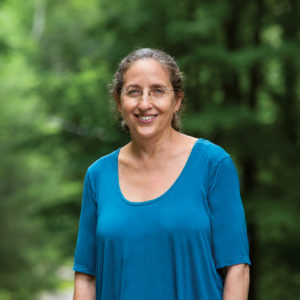
That producing cheap food comes at a high cost is not a surprise to DeFries, AB ’76. In her book The Big Ratchet: How Humanity Thrives in the Face of Natural Crisis, DeFries explains that humans have long been manipulating nature to get more food faster and cheaper. New innovations ratchet up food production, but they always come at a cost.
“Inevitably, any innovation reaches its limit, creating demands it cannot satisfy, generating too much pollution or creating some other unforeseen obstacle,” she writes. “Once again, specters of not enough food to go around appear, and prospects look grim. The hatchet falls. Then a new pivot, a new way to use nature’s endowments, emerges. The ratchet turns again, providing more and more people with food, committing civilization to keeping the growing number of people fed. At some point there’s an even bigger hurdle. … Ratchet, hatchet, pivot, ratchet, hatchet, pivot.”
DeFries should know. Currently, she’s a university professor at New York’s Columbia University in the field of ecology and sustainable development. She is a member of the U.S. National Academy of Sciences, a recipient of a MacArthur “genius” grant and author of more than 100 scientific papers.
She got her start studying earth science at Washington University and went on to earn a PhD in geography and environmental engineering at Johns Hopkins University. After earning her doctorate, she went to work in India.
“Being in India, it’s just so abundantly clear that it’s not possible to separate out what we think about conservation or nature from people,” she says. “It’s so incredibly intertwined. That helped me a lot in thinking about large questions: What is working with the environment? What is working in conservation? What does trying to protect the environment really mean?”
“We’re humans and we care about people having enough to eat. The environmental side will look at the negative impacts of people on the planet. But … there are a lot of good stories about the reduction of people living in poverty and declines in undernourishment.”
Ruth DeFries
For some, The Big Ratchet (published in fall 2014) is a bit, well, cheerful about the human impact on the environment. DeFries doesn’t come down on one side or the other with regard to DDT, monocultures, industrial farming or the other controversies surrounding food production. Even though she points out the downsides of all of these inventions (and their upsides), her tone isn’t disciplinary.
“We’re humans and we care about people having enough to eat,” she says. “The environmental side will look at the negative impacts of people on the planet. But if you look at what’s been going on, there are a lot of good stories about the reduction of people living in poverty and declines in undernourishment. Lots of different indicators show that many people are certainly better off than they used to be.”
That’s the good news. The bad news is our decimated environment, an obesity epidemic, food waste, the inequities of the new agricultural revolution and more.
Though the problems are large, DeFries thinks that we are worrying about the right things by working on our next pivot to feed ourselves in a way that the Earth can sustain. While no one is positive of the way forward, many alumni are making small but noticeable changes in how we eat.
Growing without land
Eric Ellestad, AB ’10, and Matt Vail, BS ’11, MS ’11, want to feed the world using hardly any land, very little water and no soil. Instead of growing crops on a traditional farm, they’re growing them in farms housed in shipping containers as part of a startup they co-founded called Local Roots Farms.
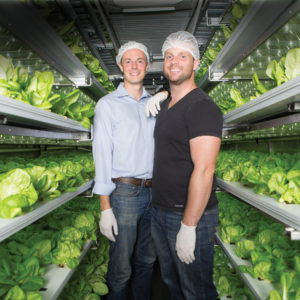
Ellestad, a pre-med, math and economics major, developed the idea while working with his family’s business, which builds refrigerated semi-truck trailers for shipping perishables. He saw firsthand the challenges of distributing fresh fruits and vegetables. “The spoilage rates, costs and inefficiencies were pretty staggering,” he says.
Ellestad figured there had to be a better way. He left his family business to work in early-stage venture finance, working with technology startups and investing in ones across industries including the food industry. After a few years of ideation, Ellestad called up Vail, a friend from his undergraduate days.
Vail, a pre-med and biomedical engineering major, saw the potential of Ellestad’s idea, which was to leverage modern technology to create a controlled-environment farming system. These farms would be able to grow vegetables, particularly ones that have a high spoilage rate, in any climate year-round. Instead of using the lengthy existing supply chains, Ellestad envisioned putting the farming projects near the distribution centers of large corporate produce buyers, so food could be delivered in a matter of hours instead of days.
In 2013, Ellestad and Vail co-founded Local Roots Farms out of Ellestad’s garage in Redondo Beach, California, with the mission of improving global health by building a better food system. The two built the entire system from the ground up. They designed the LED lighting, control-system architecture and a software platform that allowed them to take care of the plants remotely.
Less than a year later, they had their first commercial-scale farm in shipping containers stacked on a warehouse parking lot they rented. In 2014, they got the city to connect their first facility to electricity.
“That was pretty huge,” Vail says. “We spent about three months operating the farm on a generator because we couldn’t get the city to allow us to plug in to power.”
Thirty days later, Local Roots harvested its first crop and earned its first dollar.
Now, the two oversee a team of plant scientists, software engineers, roboticists and others while Ellestad serves as chief executive officer and Vail as chief operations officer.
Local Roots Farms still has challenges to overcome before it can produce food on a large scale. Both Ellestad and Vail imagine one day feeding millions all over the world. “But for now, you simply continue climbing that mountain, celebrating the small victories as much as you can,” Vail says.
But can hydroponic farming really work? And can it catch on? With most new “pivots,” as DeFries calls them, or new innovations developed to solve current problems, people aren’t certain anything will work. It’s all trial and error.
Hydroponic farming does seemingly answer many of the ills that farming is wreaking on the environment. Hydroponic plants use 99 percent less water and require no pesticides or fertilizer. One of Local Roots’ shipping containers grows the equivalent of five acres of farmland, and software allows a few people to oversee growing containers across the country. All of this might add up to reducing the impact growing food has on the environment and help keep our natural wonders safe.
A wholesome meal on every plate
“The battle to feed humanity is already lost,” wrote biologist Paul Ehrlich in his 1968 bestselling book, The Population Bomb. “We will not be able to prevent large-scale famines in the next decade or so.” Little did Ehrlich or others know that the biggest problem of the 21st century would not be famine, but obesity. Mid–20th century scientific advances created a boom in agricultural production and led to the invention of high-fructose corn syrup and hydrogenated vegetable oils. Since then, the consumption of calories, sugars and unhealthy fats has soared.
The problem of obesity is complex and being addressed by many people — including WashU alums — in myriad ways. Luke Saunders, AB ’10, for example, has decided to tackle the problem by making healthy food more convenient.
We’ve all been there. Starving, hurrying and trying to figure out where to go to get something that’s fast and not fried. Most of the time, you can’t find anything and either go hungry or compromise on the least unhealthy thing. Why is eating well so inconvenient?
Enter Farmer’s Fridge, which sells fresh food like kale chicken Caesar salad, soba noodles and crunchy Thai salad with coconut chicken from vending machines unlike any you’ve seen before. In fact, the company calls them fridges. They’re brightly lit and made of reclaimed alabaster wood, with slick modern touch-screen interfaces. Inside are rows of jars where the food is in colorful layers. It looks “the way fossils might look if the Earth had been created by meticulous vegans,” Olga Khazan wrote in a feature about Farmer’s Fridge in The Atlantic.
The fridges are in hospitals, office buildings, schools, apartments, O’Hare Airport and even 7-Elevens all over Chicago.
If you make healthy food more convenient, will people eat it? Saunders believes they will.
“I think there’s a general misconception that people don’t like eating healthy food or that it doesn’t taste good or whatever, and that’s just not true,” he says. “I think price is a very important factor and so is access.”
Access is part of the reason Saunders started his business. In 2012, he was working as a traveling salesman for a metal finishing company, and the typical on-the-road, fast-food lunch options didn’t appeal. “I had to pack my lunch every day,” he says. “And I saw a huge opportunity.”
He had seen how production worked for making, say, a granola bar. Miles of factory would take raw materials and create a bar that would be loaded on a truck and shipped across the country. By the time it reached the consumer, those initial raw ingredients could be weeks old. Saunders wanted to take raw ingredients, mix them together and get the healthy meals to the consumer as fast as possible. An automated fridge seemed the perfect system.
Saunders had to design the fridges himself as well as tinker with salad, breakfast and snack recipes. By the summer of 2013, he had the details ironed out. He and his wife had moved to Chicago for her job, and Saunders had his first fridge up by October.
Today, more than 60 fridges dot Chicago, and reviews are good. The Chicago Tribune, The Daily Mail, Cooking Light and several local news shows have featured Farmer’s Fridge. Time Out Chicago ranked the salads among the city’s 10 best, and USA Today named the company Chicago’s best takeout. Saunders also was selected as one of Forbes magazine’s 2016 30 Under 30.
All meals are made fresh and delivered each morning. Since sustainability is key for Saunders — his company composts, enables customers to easily return the salad jars and has low-energy fridges (less than $10 per month of energy costs) — he didn’t want those unsold dishes to be pitched. So he donates the food to shelters via a partnership with Zero Percent.
He hopes to spread Farmer’s Fridge throughout the country so everyone can get healthy food without the hassle. “It’s a virtuous cycle,” Saunders says. “Once you eat healthy, you realize you feel better; it feeds on itself.”
Waste not, want not
We’ve all done it: bought that head of lettuce or new root vegetable with the best intentions. But then it wilts in the crisper drawer. With a pang of guilt, we toss it in the compost pile or the garbage and resolve to do better next time.
But food waste isn’t a problem that’s just happening in the average American kitchen. It is peppered along the food production chain from farm to fork. Only 60 percent of food produced in the United States actually ends up feeding people. Fighting that problem in different ways are Elana Goldstein, AB ’02, and Katya Hantel, AB ’02.
As undergrads, Goldstein and Hantel both participated in the Hewlett Program, now called the Pathfinder Program in Environmental Sustainability, which gave them an interdisciplinary look at how to create a more sustainable future. Goldstein is now an environmental protection specialist for the U.S. Environmental Protection Agency, working to reduce food waste in America. Hantel is also working to reduce food waste and increase sustainability as the director of sustainable development at Conagra Brands, which owns Orville Redenbacher’s, Bertolli, Healthy Choice and other popular food brands.
For Goldstein, educating people about how and why to reduce food waste is key.
“For a lot of people, wasted food is out of sight, out of mind. We don’t think about how much we throw out,” Goldstein says. To combat that indifference, she says we should “teach children early on to value food by showing them how to grow their own food or participate in a school food-waste audit.”
At the EPA, Goldstein promotes the Food-Recovery Hierarchy, a guideline for reducing food waste. Best is reducing the volume of surplus food generated; next, donating extra food to food banks and soup kitchens; third, feeding food scraps to animals; fourth, converting it to energy through industrial uses; fifth, composting it; and, finally, the worst option: sending it to the landfill.
“Many people in this country are food insecure,” she says, “and thinking about where our food comes from, as well as how much is being wasted, is critical.”
For Hantel, the key to reducing food waste and increasing food sustainability is looking at changes in production. As part of its corporate social responsibility, Conagra Brands pledged to cut food waste in its operations by 50 percent by 2030, thus becoming an EPA/USDA Food Loss and Waste 2030 Champion.
The primary focus is on source reduction, but Hantel says they also try to “find creative and effective uses for the food waste that you inevitably have, even after you’ve optimized your manufacturing.” In making meat sticks and beef jerky, for instance, the ends of the sticks are cut off so everything is a uniform size. Now, Conagra packages up the leftover odds and ends and donates them to food shelters.
According to Hantel, most food companies have been looking for ways to make their products more sustainable while also reducing their triple bottom line: They reduce packaging, do more energy-efficient manufacturing and work with farmers to implement more sustainable growing practices.
“I think we’re at a real tipping point,” Hantel says. Consumer demand, corporate momentum and governments are all pushing for more sustainable food production. “We’re on a great path to make some headway.”
Those left behind
In the mid-20th century, Norman Borlaug — an American agronomist, Nobel Peace Prize winner and founder of the World Food Prize — revolutionized food production by breeding new, high-yielding crops and taking them to South America and Asia. This and other innovations led to the “Green Revolution.” Crop production boomed, feeding more people and financially benefiting large landowners. Though Borlaug tried to bring his innovations to sub-Saharan Africa, the infrastructure wasn’t in place for large, well-irrigated farms. On his deathbed in 2009, when his daughter asked him if he needed anything, the Nobel laureate replied: “Africa. Africa. I have not finished my mission in Africa.”
Helping those left behind by the Green Revolution is Jacob Elster, AB ’04, though his method is more sustainable than Borlaug’s. Instead of importing crops that will create profit only for a few large landowners, Elster is working with subsistence coffee farmers across Africa, Asia and Central America to make their crops into a specialty coffee that will net the growers more profits and create a growing demand for their products.
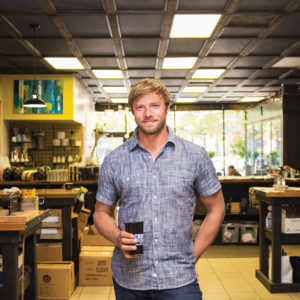
Elster’s interest in helping others was already evident while he was studying anthropology and international studies at Washington University. In 2003, he organized his own study abroad program in Switzerland at the School for International Training (SIT), hoping to work for the U.N. after graduating. While at SIT, Elster visited Uganda and knew he wanted to help.
Elster finished his studies in spring 2004 and returned to Uganda a month later to found Develop Net, a nonprofit Internet café that he built in rural Uganda. Citizens and NGOs had been asking for one, but it didn’t lead to jobs and opportunities for residents as Elster had hoped.
“In doing this type of work, I learned a lot,” Elster says. “One is to go to places where you encounter the most need, but then to work with those who are most able to benefit from the help you’re giving.”
Elster was asked to audit a dry mill in the coffee-growing region of Uganda. The dry mill had been mismanaged and was no longer operating. Farmers were losing money without a working dry mill nearby, and there were several third parties involved in the coffee distribution, further reducing profit. Noting this during the audit, Elster realized how he could best help the coffee growers.
The average coffee farm in the area had from 200 to 2,000 trees, and buyers would bulk together the coffee from multiple farms to sell it. But, “good coffee comes from good farmers,” Elster says, which has since become his company’s motto. He and his business partner, Taylor Mork, decided to use a technique called lot separation to keep the coffee from each of the growers distinct and traceable. Traceable coffee would add value to the product and allow Mork and Elster to offer a higher buying price.
“Putting a face to coffee benefits coffee farmers and coffee lovers alike,” Elster says.
He and Mork launched Crop to Cup Importers in 2007. They have had such success that they are currently importing from 10 countries, including Burundi, Ethiopia and the Congo. They’re still one of the few companies doing lot separation for small holders.
Elster and Mork sell their imported beans to roasters (such as Starbucks), and individual customers can buy from their website (croptocup.com). Each line of beans has photos of the grower, descriptions of growing conditions and information about the bean’s flavor notes. Elster wants his customers to know how their food can impact not only the environment but someone’s life as well. “Let’s actually pay for coffee knowing that there’s a farmer on the other side of it,” Elster says.
More pivots abound as people all over the world toil to solve the latest food crisis. The stakes are high. With our climate changing, DeFries points out, “the expectation of the stable Holocene climate — the climate that has prevailed since humans transitioned to farmers — is no longer valid.” And with 7.5 billion mouths to feed — and growing — the stakes have never been higher.
Rosalind Early, AB ’03 (English and American literature), is associate editor of Washington magazine.
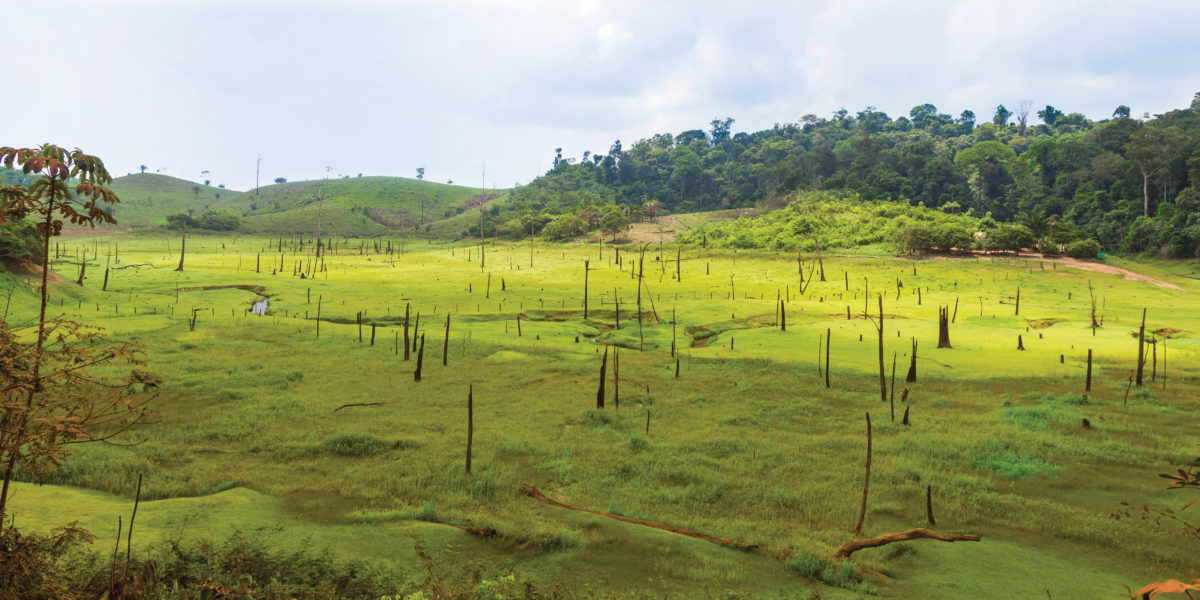
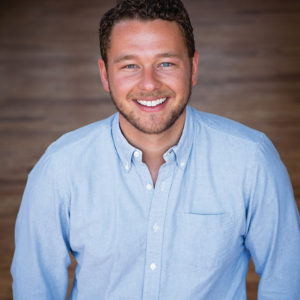
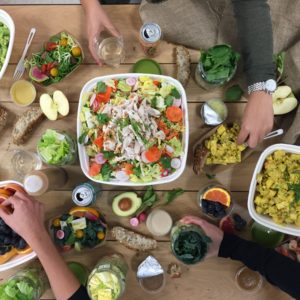
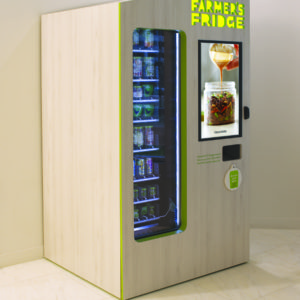
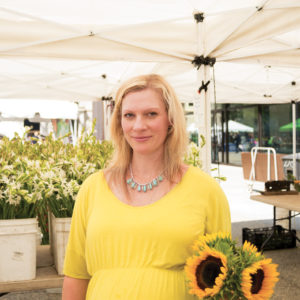
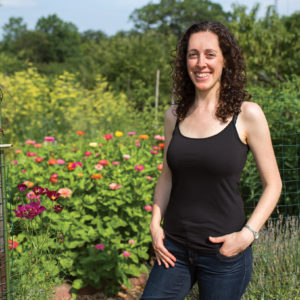

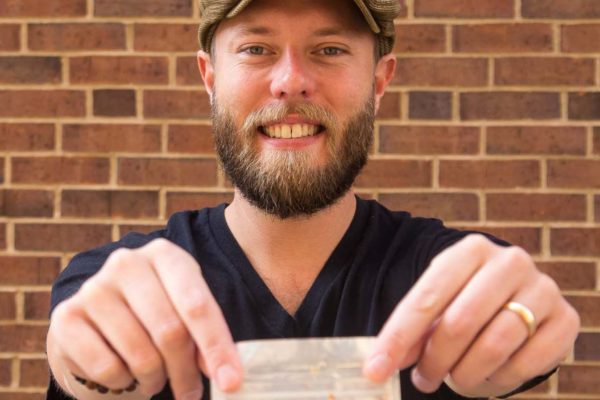
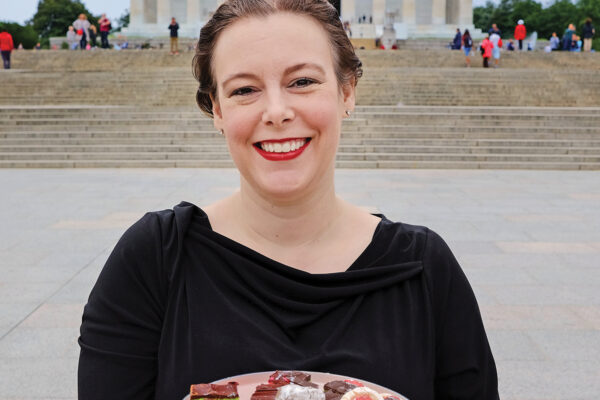
Comments and respectful dialogue are encouraged, but content will be moderated. Please, no personal attacks, obscenity or profanity, selling of commercial products, or endorsements of political candidates or positions. We reserve the right to remove any inappropriate comments. We also cannot address individual medical concerns or provide medical advice in this forum.